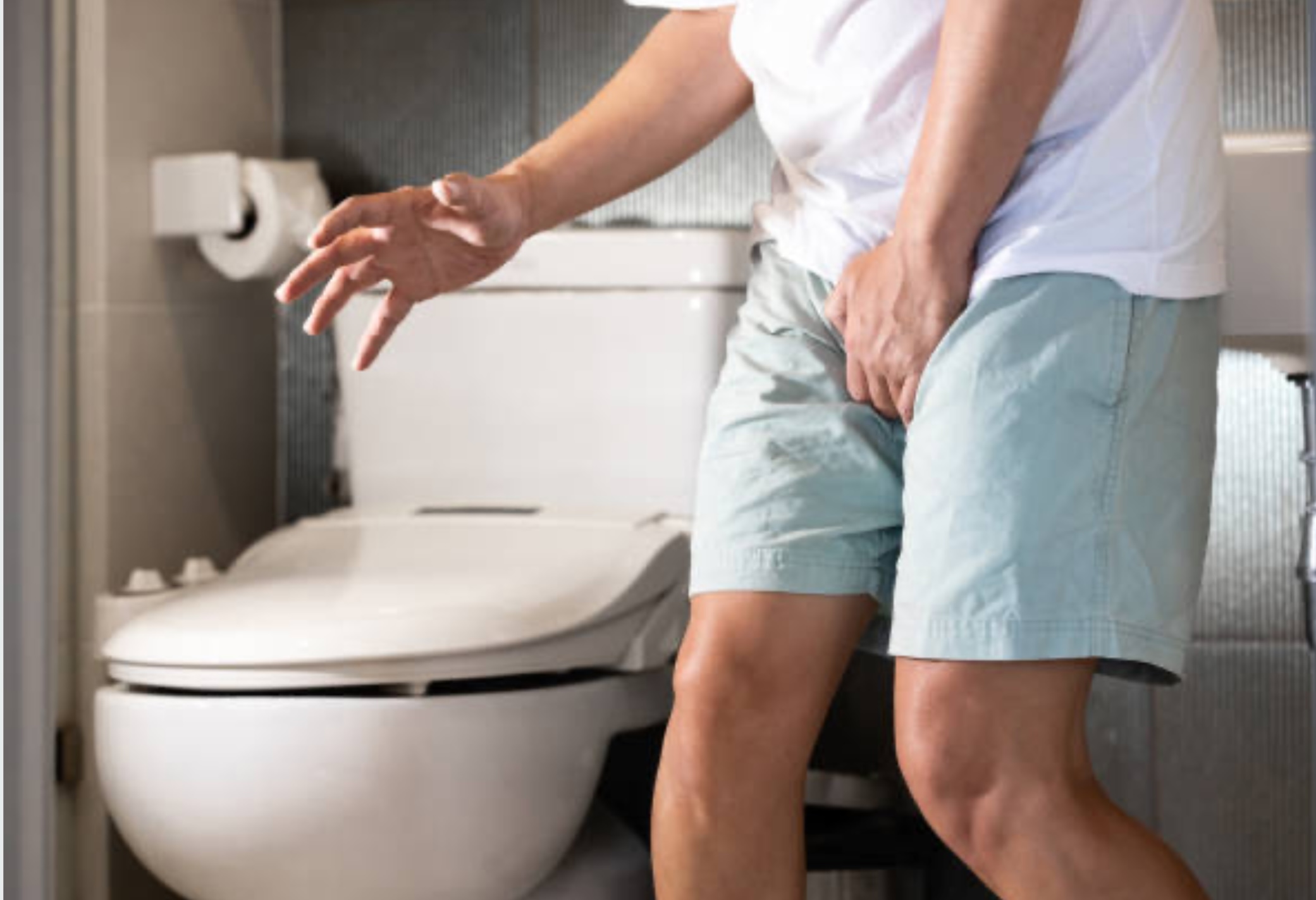In men, urinary incontinence is often linked to medical conditions, especially those affecting the prostate gland, such as:
• Benign Prostatic Hyperplasia (BPH): An enlarged prostate that can block the flow of urine.
• Prostate cancer treatments: Surgery or radiation for prostate cancer can lead to nerve damage or weakening of the sphincter muscle, resulting in incontinence.
Types of Urinary Incontinence
There are different types of urinary incontinence, each with specific characteristics:
- Stress Incontinence: This is the most common type of incontinence after prostate cancer. It occurs when pressure is applied to the bladder (e.g., coughing, sneezing, laughing, or lifting heavy objects), causing urine to leak.
- Urge Incontinence: In this type, the bladder contracts at the wrong time, leading to a sudden, intense urge to urinate. Even if the bladder has just been emptied, the individual feels like they must urinate immediately.
- Overflow Incontinence: This happens when the bladder doesn’t empty completely, causing it to overflow. This can be caused by conditions like an enlarged prostate or urethral narrowing, which obstruct normal urine flow.
- Total Incontinence: This is characterized by continual leakage of urine, usually due to a complete loss of sphincter control. This type of incontinence may occur after prostate surgery or in cases of significant nerve damage.
How a Healthy Bladder Works
The bladder is a hollow organ that stores urine produced by the kidneys. Here’s how a normal bladder functions:
- Urine Formation: Urine is formed in the kidneys and travels down to the bladder via the ureters.
- Bladder Filling: As the bladder fills, pressure increases, signaling the need to urinate.
- Bladder Contraction: When it’s time to urinate, the brain signals the bladder muscles to contract and push urine out.
- Sphincter Relaxation: The sphincter muscle around the urethra relaxes, allowing urine to exit the body.
This process requires healthy muscles, nerves, and coordination. Damage or weakening of any of these components can lead to urinary incontinence.
Causes of Urinary Incontinence
Several factors can contribute to incontinence, including:
- Prostate removal surgery: After prostate cancer treatment, nerve damage can impair bladder control.
- Infections or medications: Urinary tract infections or certain medications can lead to temporary incontinence.
- Diseases: Conditions like neurological disorders, multiple sclerosis, or spinal cord injuries can interfere with bladder control.
- Urethral strictures: Narrowing of the urethra can prevent proper urine flow.
- Pelvic trauma: Injury to the pelvic region can damage muscles or nerves involved in urination.
- Detrusor External Sphincter Dyssynergia (DESD): A condition where the bladder muscle and sphincter do not work in coordination.
The type and cause of incontinence will influence the appropriate treatment approach.
Signs of Urinary Incontinence
Urinary incontinence may be noticeable during certain activities or situations. Common signs include:
- Leaking urine when you:
- Cough or sneeze
- Laugh
- Bend or lift heavy objects
- Change positions (e.g., sitting to standing)
- Sleep (nocturnal incontinence)
If urine leakage is interfering with your quality of life or making daily activities difficult, it’s essential to speak to a healthcare provider.
Seeking Help and Treatment
If you experience any of the symptoms mentioned above, don’t hesitate to consult a doctor. A healthcare professional can diagnose the type of incontinence you have and suggest an appropriate treatment plan.
Treatment options for urinary incontinence may include:
- Behavioral therapies: Bladder training, pelvic floor exercises (Kegel exercises), and lifestyle modifications.
- Medications: Drugs to control overactive bladder muscles or improve sphincter function.
- Surgical treatments: In some cases, surgery may be necessary to repair damaged muscles or tissues.
- Medical devices: For some types of incontinence, devices like a catheter or penile clamp may be used.
Incontinence is a manageable condition, and many effective treatments can help men regain control over their bladder. Don’t let the stigma prevent you from seeking help. You are not alone, and a wide range of treatments can improve your quality of life.








